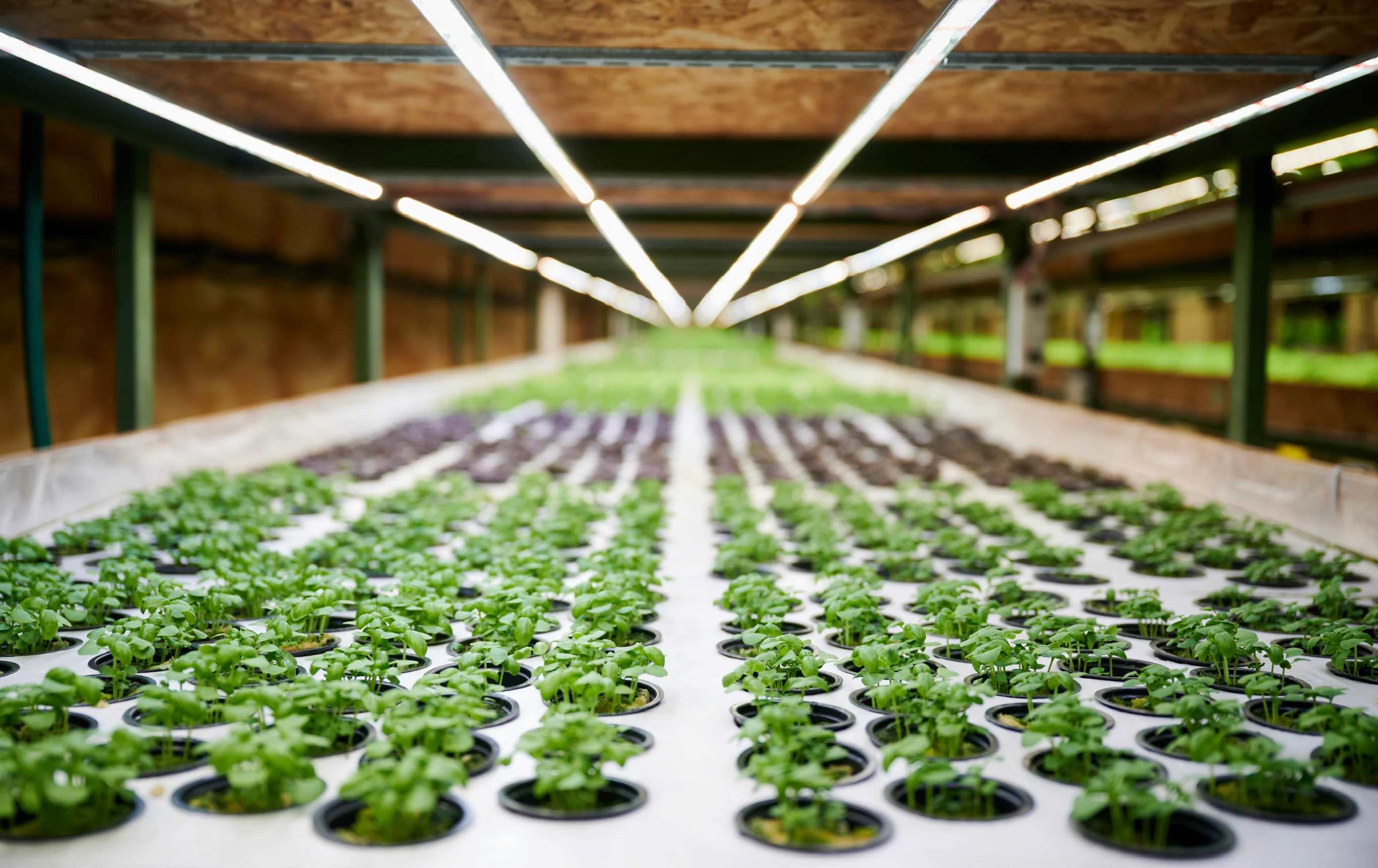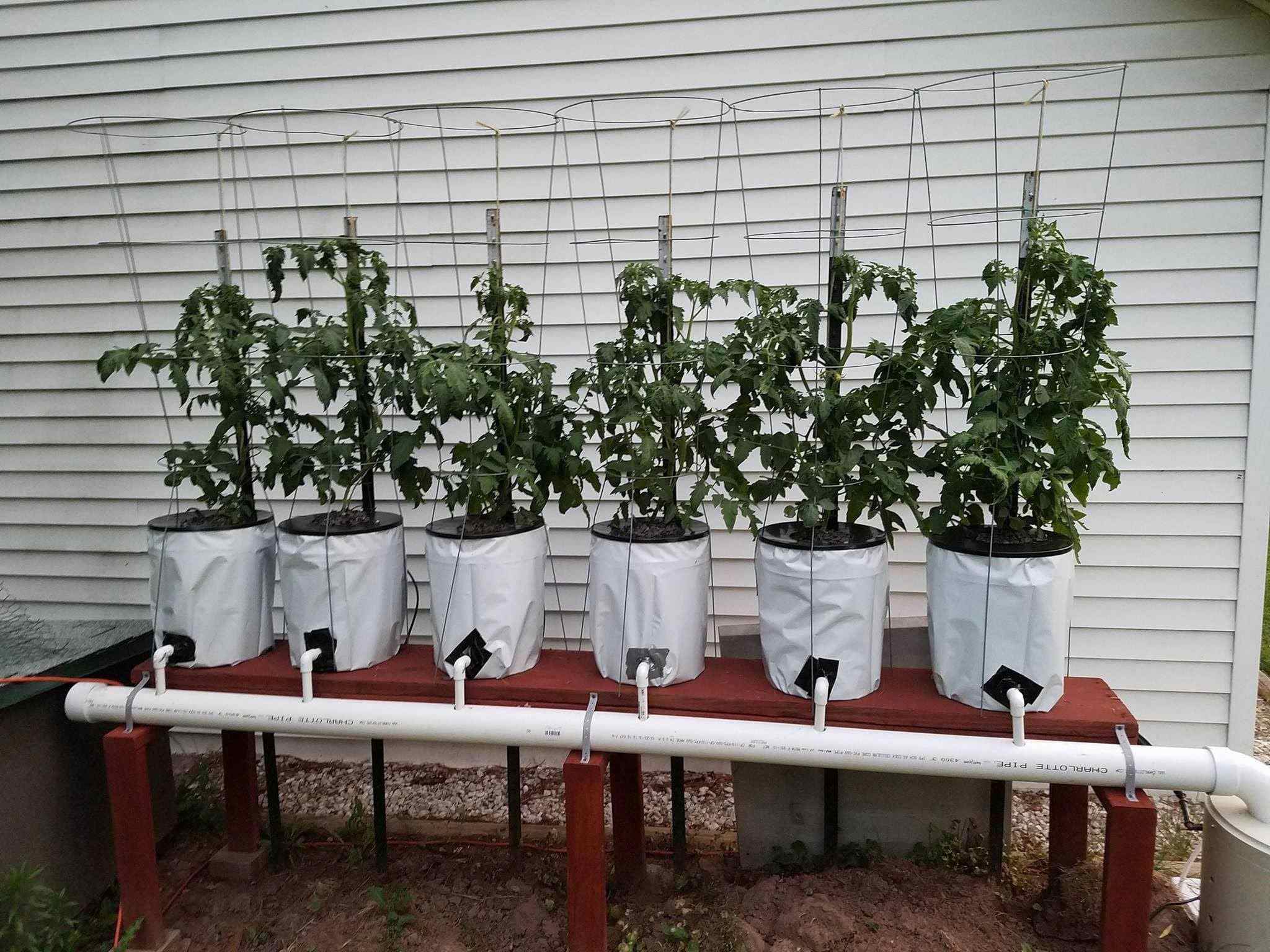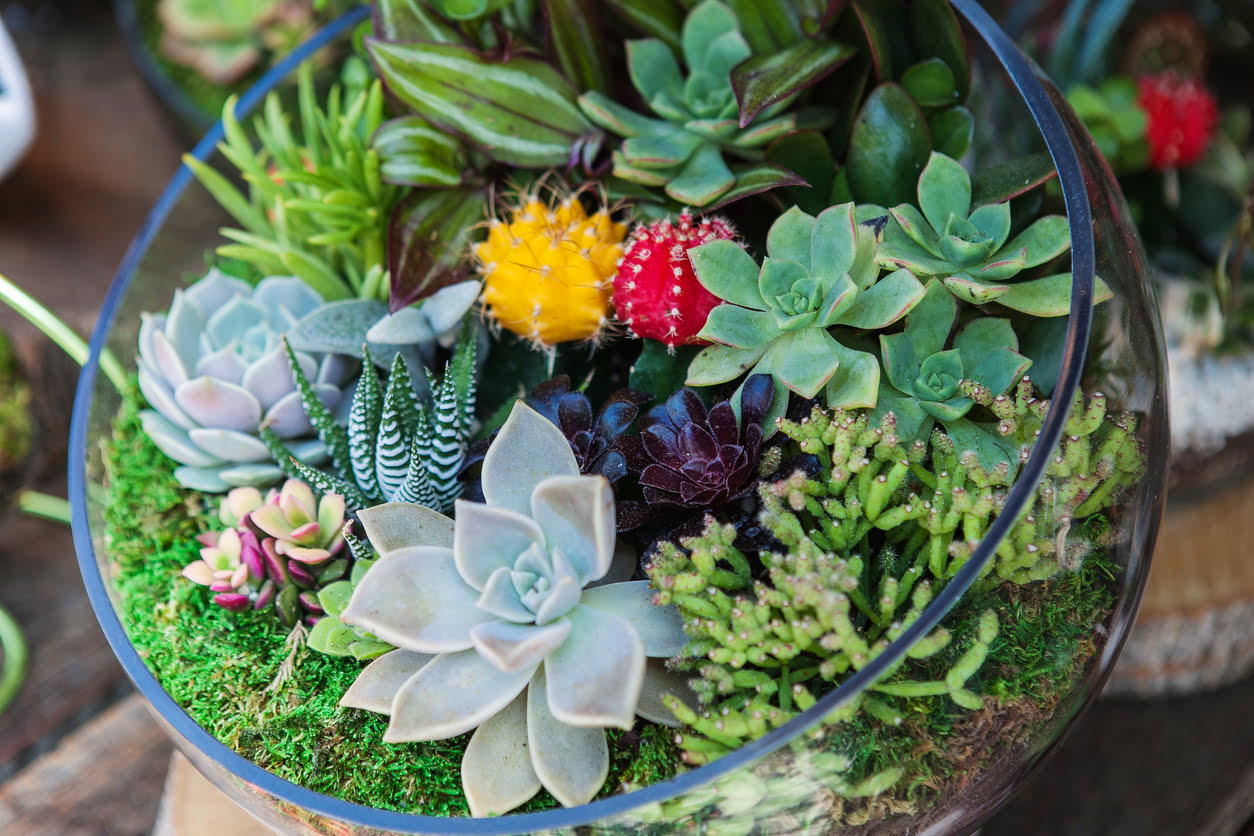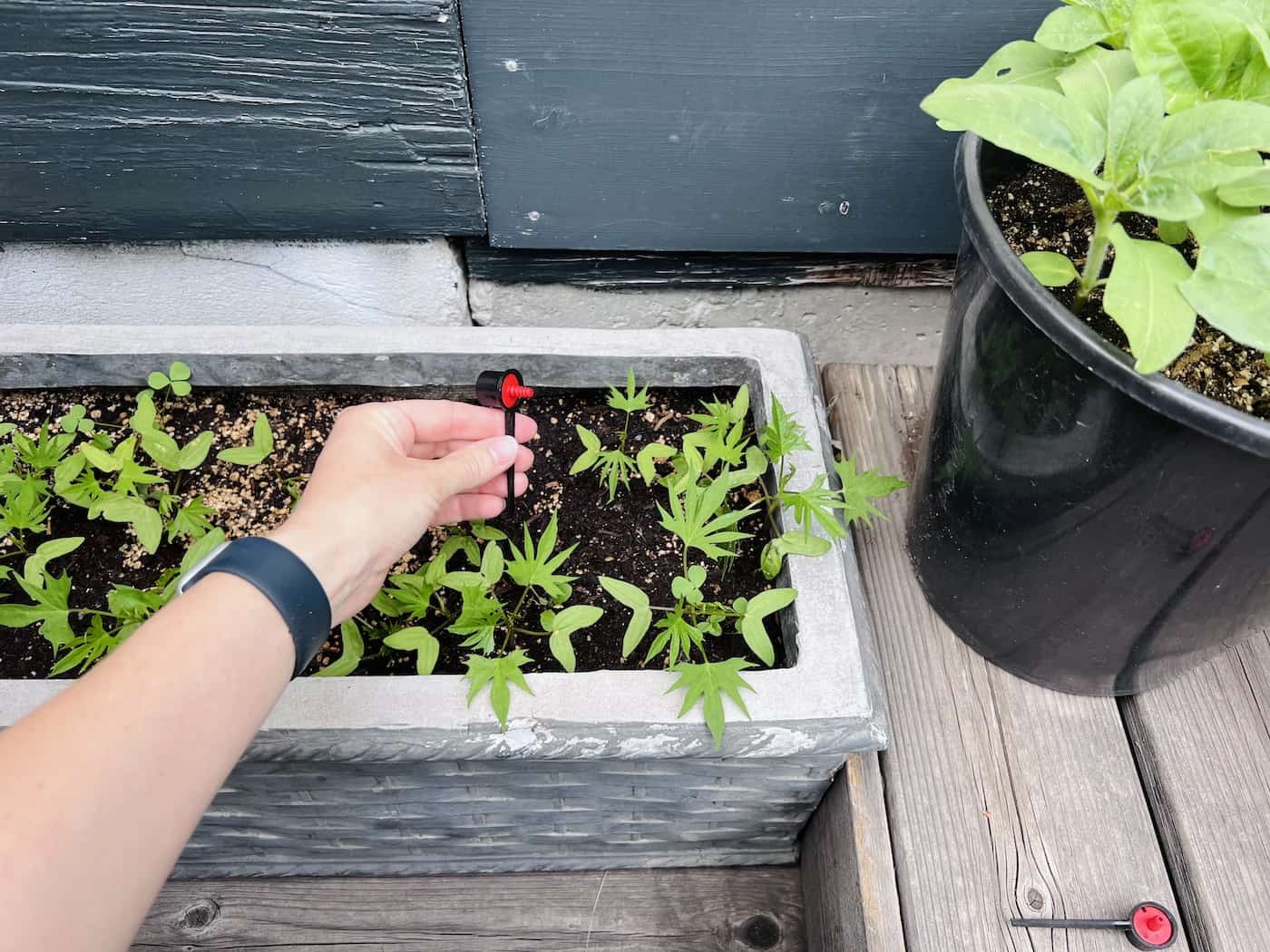Home>Garden Design>How To Spruce Up Backyard
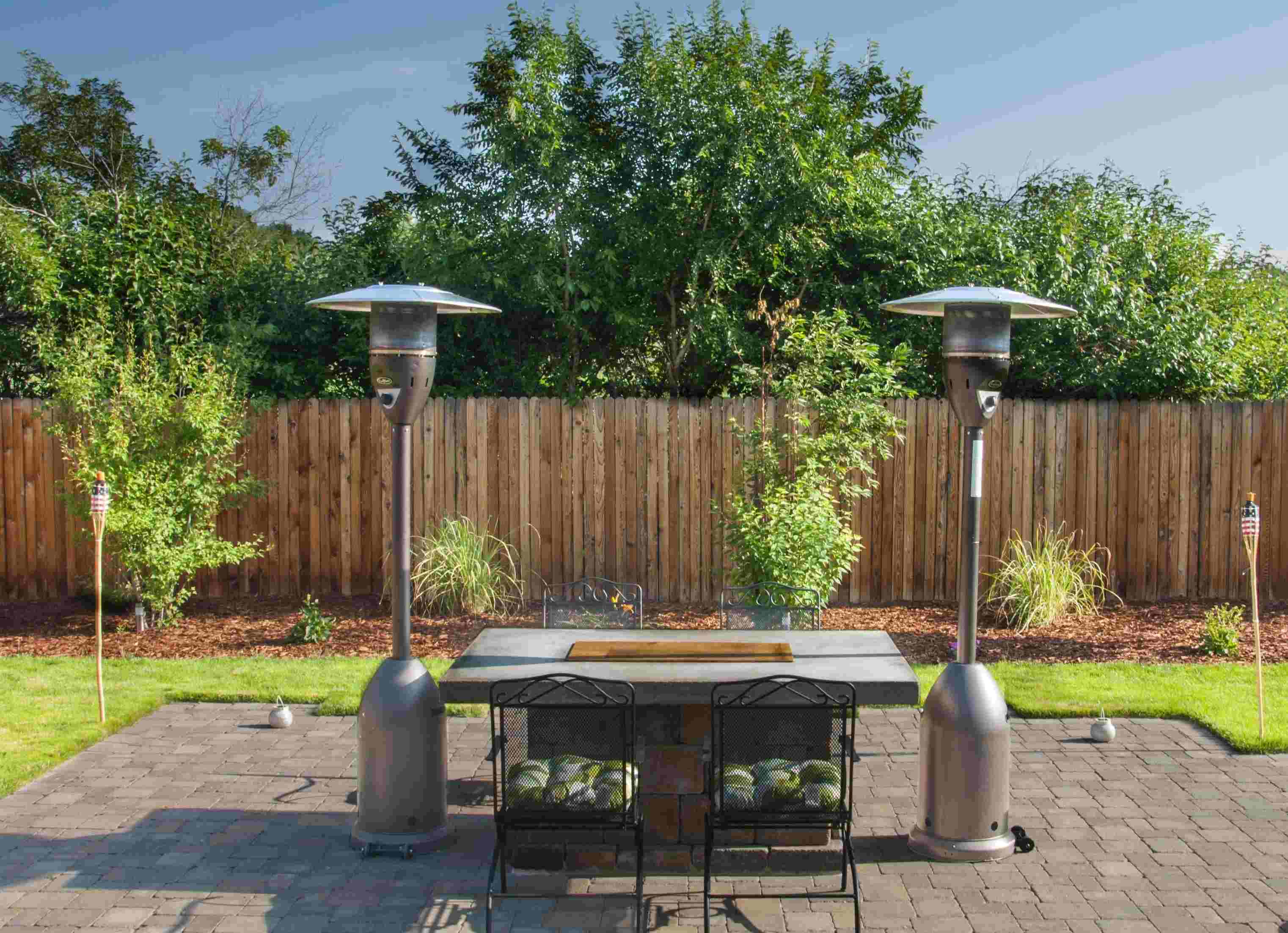

Garden Design
How To Spruce Up Backyard
Published: August 5, 2023
Enhance your backyard with expert landscape design tips and ideas. Transform your outdoor space into a stunning oasis with our easy-to-follow guide.
(Many of the links in this article redirect to a specific reviewed product. Your purchase of these products through affiliate links helps to generate commission for Chicagolandgardening.com, at no extra cost. Learn more)
Table of Contents
Introduction
Welcome to the world of landscape design, where creativity meets nature. Whether you have a large backyard or a cozy outdoor space, sprucing it up can transform it into a personal oasis that reflects your style and enhances your lifestyle. A well-designed and thoughtfully crafted backyard can provide a space for relaxation, entertainment, and connection with nature.
When it comes to landscape design, there are endless possibilities and opportunities to unleash your creativity. From choosing the right plants and flowers to incorporating decorative elements and outdoor furniture, every small detail plays a significant role in creating a harmonious and inviting backyard.
In this article, we will explore the various steps involved in sprucing up your backyard. We will guide you through the process of assessing your space, creating a design plan, selecting the perfect plants, and incorporating unique features that will make your backyard truly remarkable. So, let’s dive in and discover how to transform your outdoor space into a haven of beauty and tranquility.
Assessing Your Backyard
Before diving into the exciting world of landscape design, take some time to assess your backyard and understand its unique features and challenges. Careful observation and evaluation will help you make informed decisions and create a design plan that maximizes the potential of your outdoor space.
Start by considering the size and shape of your backyard. Take measurements and sketch out a rough layout to visualize the available space. Identify any existing structures or features, such as trees, fences, or patios, that you want to incorporate into your design.
Next, evaluate the overall condition of your backyard. Is the soil healthy and fertile, or does it need improvement? Take note of any areas with poor drainage or excessive shade which may restrict plant growth. Understanding these aspects will help you select suitable plants and make necessary adjustments to enhance the overall functionality of your backyard.
Consider the topography of your backyard. Are there any slopes or contours to work with or against? These natural features can add visual interest and provide opportunities for creating terraced gardens or seating areas. However, they may also require additional planning to prevent erosion or ensure proper water flow.
Take into account the climate and weather patterns of your area. Different plants thrive in different conditions. Choose plants that are well-suited to your local climate to minimize maintenance and ensure their long-term survival.
Finally, think about how you intend to use your backyard. Will it be primarily for entertaining, relaxation, or family activities? Understanding the purpose and desired functionality of your outdoor space will help inform your design decisions and prioritize certain features and elements.
By thoroughly assessing your backyard, you will have a solid foundation for the rest of your landscape design journey. This evaluation process will set the stage for creating a well-planned and personalized outdoor oasis that is both aesthetically pleasing and functional.
Creating a Design Plan
Once you have assessed your backyard and gathered all the necessary information, it’s time to create a design plan. This step is crucial as it will serve as a roadmap for your landscape project and ensure that your vision comes to life.
Start by defining your design goals and preferences. Consider the overall theme or style you want to achieve in your backyard. Whether it’s a tropical paradise, a serene Japanese-inspired garden, or a contemporary outdoor retreat, having a clear vision will help guide your design decisions.
Next, create a layout for your backyard that considers both aesthetic appeal and functionality. Decide where various elements, such as seating areas, pathways, and plant beds, will be placed. Take into account factors like sun exposure, privacy, and accessibility to ensure a harmonious and practical design.
When selecting plants for your backyard, consider their growth habits, colors, and textures. Mix different varieties to create visual interest and balance. Pay attention to the seasons and choose a combination of plants that will provide year-round beauty. Additionally, consider the maintenance requirements of each plant and ensure they are suitable for your level of commitment.
Consider incorporating hardscape elements such as gazebos, pergolas, or patios to add structure and define different areas within your backyard. These features not only provide a functional space for relaxation or entertaining but also lend visual appeal and create focal points.
Remember to leave ample space for movement and circulation within your backyard. Pathways and walkways should be wide enough to comfortably accommodate foot traffic. Strategic placement of focal points and elements of interest will guide visitors through your backyard and create a sense of discovery.
Consider incorporating sustainable design principles into your plan. Opt for native plants that are adapted to your climate and require less water and maintenance. Install a rainwater harvesting system or consider using permeable paving materials to reduce water runoff and improve soil health.
Creating a design plan allows you to have a clear vision and direction for your backyard. It ensures that all the elements and features work together harmoniously while reflecting your style and preferences. With a well-thought-out plan, you can embark on the implementation phase with confidence.
Choosing Plants and Flowers
The selection of plants and flowers is a crucial step in landscape design as they bring life, color, and texture to your backyard. Choosing the right plants will not only enhance the aesthetic appeal but also ensure they thrive in your specific environment. Here are some factors to consider when selecting plants for your backyard:
1. Climate and Hardiness: Consider the climatic conditions of your region, including the average temperature, rainfall, and sunlight exposure. Choose plants that are well-adapted to your specific climate to ensure their successful growth and longevity.
2. Soil Type and pH: Evaluate the soil type in your backyard and determine if it is sandy, loamy, or clayey. Additionally, test the pH level to ensure it is suitable for the plants you intend to grow. Different plants have different soil preferences, so it’s important to choose varieties that will thrive in your soil conditions.
3. Maintenance Requirements: Consider the amount of time and effort you are willing to dedicate to plant maintenance. Some plants require regular pruning, watering, and fertilizing, while others are more low-maintenance. Choose plants that align with your gardening abilities and lifestyle.
4. Color Palette and Texture: Decide on a color palette that complements your overall design theme. From vibrant flowers to lush foliage, the right combination of colors can create a stunning visual impact. Additionally, consider the texture of the plants. Incorporating a mix of textures, such as smooth, feathery, or spiky leaves, adds depth and interest to your landscape.
5. Seasonal Appeal: Consider the seasonal changes in your area and choose plants that offer year-round beauty. Incorporate a mix of plants that bloom in different seasons to keep your backyard vibrant and visually appealing throughout the year.
6. Native and Non-Native Plants: Native plants are well-suited to the local environment and require less maintenance and water compared to non-native species. Consider incorporating a variety of native plants to support the local ecosystem and attract native wildlife.
7. Purpose and Functionality: Think about the purpose and functionality of the plants in your backyard. Are they meant to provide privacy, shade, or fragrance? Will they attract pollinators or discourage pests? Consider these factors when selecting plants to ensure they contribute to the overall enjoyment and functionality of your outdoor space.
By carefully selecting plants and flowers that meet these criteria, you can create a beautifully balanced and sustainable landscape that thrives in your backyard. Remember to plan for proper spacing and growth patterns to allow your plants room to flourish and enhance the overall aesthetics of your outdoor space.
Adding Outdoor Furniture and Decorations
Outdoor furniture and decorations play a vital role in transforming your backyard into a comfortable and inviting living space. They not only provide functional seating and dining areas but also add style and personality to your outdoor oasis. Here are some tips for selecting and arranging outdoor furniture and decorations:
1. Determine Your Needs: Consider how you plan to use your backyard and the activities you want to accommodate. Do you enjoy hosting outdoor dinners or prefer lounging in the sun? Determine the types of furniture that will suit your needs, such as dining sets, lounge chairs, hammocks, or benches.
2. Choose Durable Materials: Opt for outdoor furniture made from durable materials that can withstand the elements. Look for weather-resistant materials like teak, aluminum, or synthetic wicker that are resistant to fading, rusting, and rotting. This will ensure that your furniture lasts for years and requires minimal maintenance.
3. Consider Comfort: Comfort is key when it comes to outdoor seating. Choose cushions and fabrics that are weather-resistant and easy to clean. Add pillows and throws to create a cozy atmosphere. Additionally, consider the ergonomic design of the furniture to ensure proper support and comfort for hours of relaxation.
4. Scale and Proportion: Consider the size and scale of your backyard when choosing furniture. Oversized furniture can overpower a small space, while tiny pieces may get lost in a large area. Ensure that the scale and proportion of your furniture are well-suited to the size of your outdoor space to create a balanced and harmonious look.
5. Create Zones: Designate different zones for various activities within your backyard. Separate seating areas for dining, conversation, and relaxation. Arrange furniture in a way that encourages conversation and facilitates easy movement between areas.
6. Add Decorative Accents: Enhance the ambiance of your backyard by adding decorative accents and accessories. Hang string lights or lanterns to create a cozy and magical atmosphere during the evenings. Incorporate outdoor rugs, pillows, and throws to add color and patterns to your seating areas. Display potted plants, sculptures, or artwork to bring artistic flair to your outdoor space.
7. Consider Shade and Protection: If your backyard receives direct sunlight, consider adding a shade element like a pergola, umbrella, or retractable awning to provide relief from the sun’s rays. Additionally, consider installing outdoor curtains or privacy screens to create a more intimate and secluded space.
By selecting the right outdoor furniture and decorations and arranging them thoughtfully, you can create a stylish and functional outdoor living area that reflects your personal style and provides a relaxing ambiance in your backyard.
Installing Lighting Features
Proper lighting is essential for creating an enchanting and inviting atmosphere in your backyard. It not only extends the usability of your outdoor space into the evening hours but also adds a touch of ambiance and enhances the overall aesthetics. Here are some ideas for installing lighting features in your backyard:
1. Ambient Lighting: Begin by considering ambient lighting, which provides overall illumination to your outdoor space. This can be achieved through overhead lights, such as pendant lights or chandeliers, or by installing recessed lights on covered areas like pergolas or patios. Choose warm-toned bulbs to create a cozy and welcoming atmosphere.
2. Task Lighting: Task lighting is crucial for specific functional areas, such as cooking or dining zones. Install task lighting above the grill or outdoor kitchen area to ensure safe and efficient food preparation. Place lights strategically over dining tables or seating areas to create a well-lit and inviting environment for gatherings.
3. Pathway Lighting: Illuminate pathways and walkways with pathway lighting to provide safety and guidance. Choose low-level lights or in-ground fixtures to mark the edges of pathways and guide visitors through your backyard. Solar-powered lights are a sustainable option that requires no wiring or electricity.
4. Accent Lighting: Accent lighting adds drama and highlights specific features in your backyard. Use spotlights or well lights to illuminate trees, shrubs, or architectural elements. Place lights near water features or sculptures to create captivating focal points. This type of lighting adds depth and visual interest to your outdoor space.
5. String Lights: String lights are a versatile and whimsical option for creating a magical ambiance in your backyard. Hang them across your patio, weave them through pergolas or gazebos, or drape them over trees and shrubs to add a soft, warm glow. Use LED string lights for energy efficiency and longevity.
6. Smart Lighting: Consider installing smart lighting systems that allow you to control and adjust your outdoor lights remotely. With smart dimmers and timers, you can create custom lighting settings and schedules to match your preferences and conserve energy.
7. Safety Lighting: Don’t forget to include safety lighting in your backyard design. Install motion sensor lights near entrances, pathways, and stairs to ensure visibility and prevent accidents. These lights automatically turn on when they detect movement, providing an added layer of security.
By incorporating a combination of ambient lighting, task lighting, pathway lighting, accent lighting, and decorative string lights, you can create a mesmerizing atmosphere in your backyard. Experiment with different lighting techniques and positions to achieve the desired effect and enjoy your outdoor space even after the sun goes down.
Creating a Relaxation Area
In today’s fast-paced world, having a dedicated relaxation area in your backyard can provide a much-needed escape from the stresses of everyday life. This tranquil space allows you to unwind, recharge, and connect with nature. Here are some ideas for creating a relaxation area in your backyard:
1. Comfortable Seating: Choose comfortable and inviting seating options to create a cozy and relaxing atmosphere. Opt for plush lounge chairs, hammocks, or even a hanging swing. Incorporate soft cushions and throw pillows to enhance comfort and create a luxurious feel.
2. Shade and Privacy: Install a shade structure, such as a pergola or canopy, to provide relief from the sun’s rays and create a more private space. Use outdoor curtains or screens to add an extra layer of privacy. This will allow you to enjoy your relaxation area without feeling exposed to the outside world.
3. Natural Elements: Surround yourself with natural elements that promote a sense of calmness. Incorporate potted plants, lush greenery, or a vertical garden to bring nature closer to your relaxation area. The sight and scent of plants can have a soothing effect on the mind.
4. Water Features: Consider incorporating a water feature, such as a fountain, pond, or waterfall, to create a serene and tranquil ambiance. The sound of running water can help drown out ambient noise and provide a sense of tranquility, making your relaxation area even more peaceful.
5. Zen Garden: Create a small Zen garden in your relaxation area to promote a sense of peace and mindfulness. Use pebbles, sand, and carefully placed rocks to create patterns and symbols. Add a miniature rake for a therapeutic and meditative activity.
6. Outdoor Structures: Consider adding an outdoor structure, such as a gazebo, cabana, or screened-in porch, to your relaxation area. These structures provide shelter from the elements while still allowing you to enjoy the beauty of your backyard. They also create a cozy and intimate space for relaxation.
7. Ambient Lighting: Install soft and warm lighting to create a soothing ambiance in your relaxation area. Use string lights, lanterns, or even candles to add a touch of enchantment in the evenings. Avoid bright and harsh lighting, as it can disrupt the calming atmosphere.
8. Personal Touches: Add personal touches that reflect your style and personality. Hang wind chimes that produce gentle melodies or incorporate artwork or sculptures that bring you joy. Potted plants with vibrant blooms can also add a pop of color and create a welcoming environment.
Creating a relaxation area in your backyard allows you to create a peaceful and rejuvenating sanctuary just steps away from your home. Whether you prefer a Zen-inspired retreat or a cozy nook surrounded by nature, take the time to design a space that caters to your relaxation needs and promotes overall well-being.
Incorporating Water Elements
Adding water elements to your backyard can bring a sense of serenity, beauty, and tranquility to your outdoor space. The soothing sound of flowing water and the visual appeal of shimmering reflections can create a peaceful oasis in your backyard. Here are some ideas for incorporating water elements into your landscape design:
1. Fountains: Fountains are a classic water feature that instantly adds elegance and charm to any outdoor space. They come in various styles and sizes, from grand tiered fountains to smaller wall-mounted fountains. Choose a fountain that complements the overall aesthetic of your backyard and place it as a focal point in a garden bed or patio area.
2. Ponds and Waterfalls: Create a natural and serene atmosphere by incorporating a pond with a cascading waterfall. This feature not only adds a visual element of interest but also provides a habitat for aquatic plants and animals. Consider adding fish or water lilies to enhance the natural beauty of the pond.
3. Reflecting Pools: Reflecting pools are both visually stunning and calming. They create a mirror-like surface that beautifully reflects the sky and surrounding landscape. Place a reflecting pool near a seating area or gazebo to create a tranquil setting where you can relax and enjoy the serenity of the water.
4. Stream or Brook: If you have a slope in your backyard, consider creating a meandering stream or brook that mimics the look and sound of a natural watercourse. Add rocks and plants around the stream to create a more natural and inviting feel. The gentle sound of flowing water will add a soothing element to your outdoor space.
5. Water Wall: A water wall is a vertical water feature that adds a modern and sleek touch to your backyard. It consists of a wall with water flowing down its surface, creating a calming and mesmerizing effect. Install a water wall near a seating area or as a backdrop for a garden bed to create a dramatic focal point.
6. Birdbaths: Birdbaths not only add water elements to your backyard but also attract birds and other wildlife, adding life and movement to your outdoor space. Choose a birdbath that complements your overall design aesthetic and place it in a quiet and peaceful area where birds can enjoy a refreshing drink or bath.
7. Swimming Pool: If you have ample space and a desire for more recreational options, consider installing a swimming pool. A pool provides a refreshing and inviting water element that can be enjoyed by family and friends. Incorporate landscaping elements around the pool to create a seamless transition between the pool and the rest of your backyard.
When incorporating water elements into your backyard, it’s important to consider the maintenance requirements, safety considerations, and overall aesthetic. Whether you choose a small fountain or an expansive pond, adding water features will elevate the ambiance of your outdoor space, creating a peaceful and serene environment.
Implementing a Personal Touch
Infusing your backyard with a personal touch is the key to creating a space that truly reflects your style, interests, and personality. Adding unique elements and incorporating personal touches will make your outdoor space feel special and create a sense of ownership. Here are some ideas for implementing a personal touch in your backyard:
1. Outdoor Art and Sculptures: Display sculptures or artwork that speak to your personal taste and evoke emotion. This can be a large statement piece or a collection of smaller items strategically placed throughout your backyard. Choose pieces that complement the overall theme and create visual interest.
2. DIY Projects: Take on fun do-it-yourself projects to add a personal and customized touch to your outdoor space. Build a pergola or a raised garden bed, create unique planters from repurposed materials, or craft outdoor decor items. DIY projects allow you to express your creativity and leave a personal stamp on your backyard.
3. Signage and Labels: Incorporate signage or labels that add whimsy and charm to your backyard. Design custom signs with inspirational quotes, label your herb garden with colorful markers, or create a welcoming entrance with a personalized nameplate. These small details will make your backyard feel more personalized and inviting.
4. Personal Collections: Showcase your personal collections or hobbies in your backyard. If you collect vintage lanterns, display them on a shelf or hang them from tree branches. If you have a passion for birdwatching, set up bird feeders and houses. Incorporating your collections adds a personal touch and sparks conversations with guests.
5. Mementos and Keepsakes: Incorporate sentimental items and mementos into your backyard design. Hang family photos in weather-resistant frames, create a memory wall with framed postcards, or place heirloom furniture passed down through generations. These elements will create a sense of connection and nostalgia in your outdoor space.
6. Outdoor Kitchen or Bar: If you enjoy entertaining, consider incorporating an outdoor kitchen or bar. Customize it to fit your culinary style and preferences. Install a pizza oven, a built-in grill, or a small bar area complete with a refrigerator and seating. This personalized addition will make your backyard the go-to spot for outdoor gatherings.
7. Color Scheme: Select a color scheme that resonates with you and use it throughout your backyard. Incorporate your favorite colors through cushions, table linens, or planters. The color scheme will tie all the elements together and create a cohesive and personalized look.
8. Unique Plant Selection: Choose plants and flowers that hold personal significance. Plant varieties that remind you of a special memory, such as the flowers your grandparents grew or the lavender that reminds you of a favorite trip. These plants will not only add beauty to your backyard but also evoke nostalgic feelings.
By implementing these personal touches, you can transform your backyard into a space that is uniquely yours. Each element and detail will reflect your style, memories, and interests, creating a backyard that is not only visually appealing but also filled with sentimental value.
Maintaining and Upkeeping Your Backyard
Maintaining and upkeeping your backyard is essential to ensure its longevity, beauty, and functionality. Regular care and attention will help your landscape thrive and continue to bring you joy. Here are some tips for maintaining and upkeeping your backyard:
1. Regular Watering: Proper hydration is vital for the health of your plants. Water your plants regularly, particularly during dry spells or hot summer months. Be mindful of the specific water requirements of different plants and adjust your watering schedule accordingly.
2. Mulching: Apply a layer of mulch around your plants and flowerbeds. Mulch helps retain moisture, suppresses weed growth, and regulates soil temperature. Use organic materials like shredded bark, wood chips, or straw for optimal results.
3. Pruning and Trimming: Regularly prune and trim your plants to maintain their shape, encourage healthy growth, and remove dead or diseased branches. Be mindful of the specific pruning requirements of each plant to ensure you don’t harm their overall health.
4. Weed Control: Stay on top of weed control by regularly removing any invasive plants or weeds that compete with your desired vegetation. Use hand pulling, mulching, or organic weed control methods to minimize the use of chemicals.
5. Fertilizing: Provide essential nutrients to your plants by fertilizing them at regular intervals. Use organic or slow-release fertilizers to avoid overfeeding or damaging the plants. Follow the manufacturer’s instructions for proper application and dosage.
6. Pest and Disease Management: Monitor your plants for any signs of pests or diseases. Implement proper pest management techniques like handpicking pests, using organic insecticides, or introducing beneficial insects. Promptly address any signs of disease by removing infected plant parts or seeking professional advice.
7. Seasonal Maintenance: Adjust your maintenance routine based on the changing seasons. Prepare your backyard for winter by protecting delicate plants, covering sensitive structures, and taking necessary precautions. In the spring, remove debris, cultivate the soil, and prepare for new growth.
8. Regular Cleaning: Keep your outdoor furniture, accessories, and hardscape surfaces clean and well-maintained. Regularly sweep, hose down, and wipe clean your furniture and surfaces. Remove any debris, fallen leaves, or clutter that may accumulate over time.
9. Irrigation System Maintenance: If you have an automated irrigation system, regularly check and maintain it to ensure optimal functioning. Inspect for leaks, blockages, or malfunctions and adjust the schedule as needed based on weather conditions.
By following these maintenance practices, you can keep your backyard in its best condition and enjoy a flourishing landscape year-round. Regular care and attention will preserve the beauty and functionality of your outdoor space, allowing you to fully embrace the oasis you have created.
Conclusion
Transforming your backyard into a stunning and functional space is an exciting journey that allows you to unleash your creativity and forge a deeper connection with nature. By assessing your backyard, creating a design plan, choosing the right plants and flowers, adding outdoor furniture and decorations, installing lighting features, creating a relaxation area, incorporating water elements, and adding personal touches, you can create a backyard that reflects your style and enhances your lifestyle.
Remember, proper maintenance and upkeep are crucial for the long-term success of your backyard. Regular watering, pruning, fertilizing, and weed control will ensure that your landscape thrives and remains in beautiful condition.
Whether you envision a serene retreat, an entertainment hub, or a vibrant garden, the possibilities are endless. Embrace the opportunity to create a backyard that not only enhances the beauty of your outdoor space but also brings you joy, relaxation, and a deeper connection with nature.
So, grab your tools, let your creativity flow, and embark on the journey of transforming your backyard into a haven that represents your unique style and personality. It’s time to bring your dream outdoor space to life and start enjoying the countless hours of relaxation, entertainment, and connection with nature that await you in your beautifully designed backyard.

